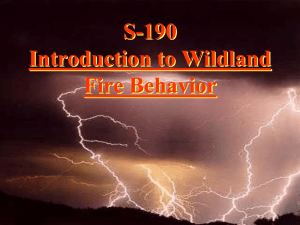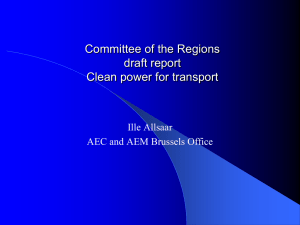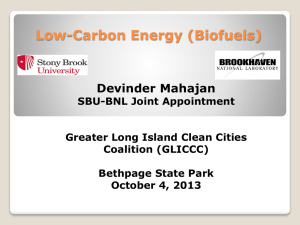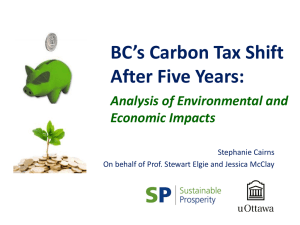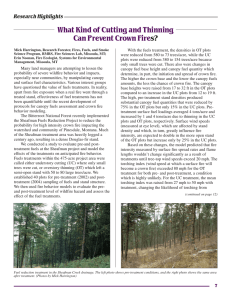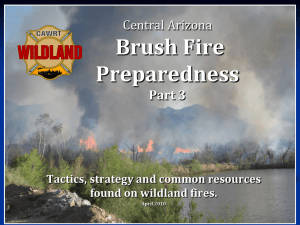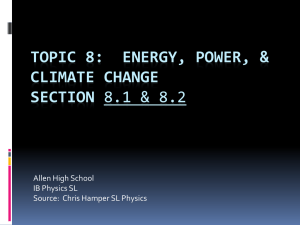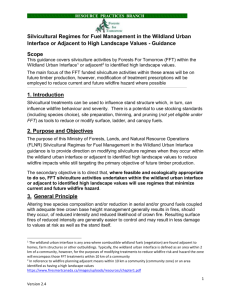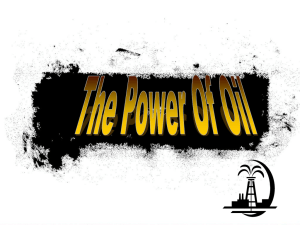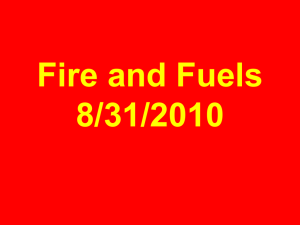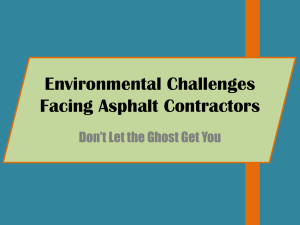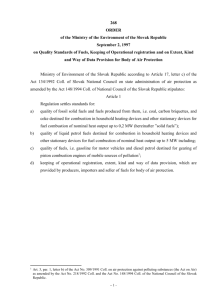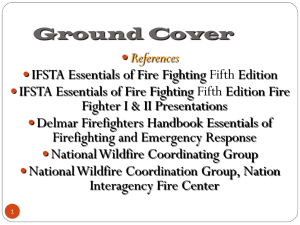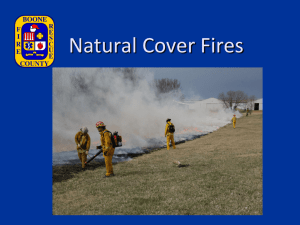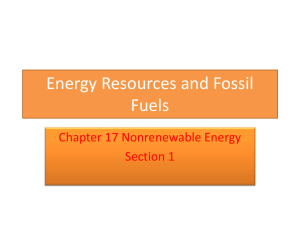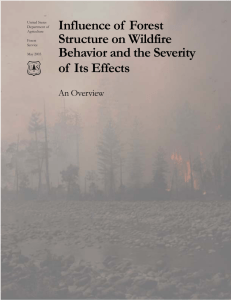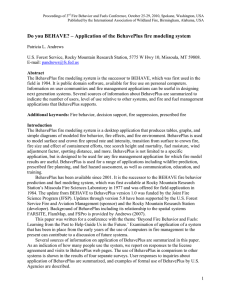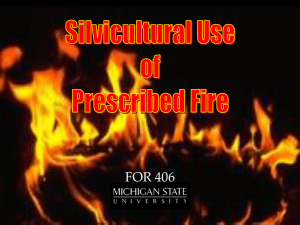Fire Behavior
advertisement
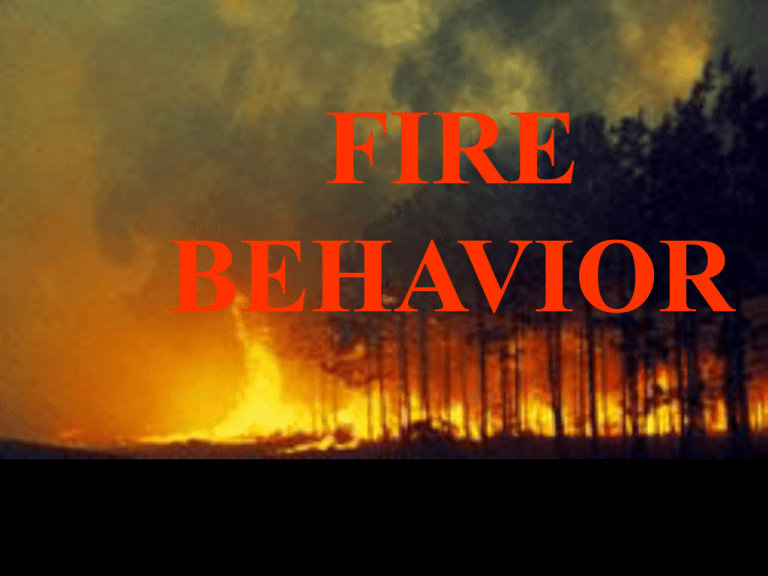
FIRE BEHAVIOR Three types of fire behavior Surface fire: Fuels at or near the surface Ground: Subsurface organic fuels (duff, organic soils) Crown: Tree crowns Categories of fires according to human management action: Wildfire: Suppression action is taken Management ignited prescribed fire: Ignited to meet a management objective Prescribed natural fire: Allowed to burn under a management plan to preserve natural role of fire Fire Behavior: The Wildland Fire Environment Weather Topography FIRE Fuels Components of the Wildland Fire Environment Weather •Temperature •Relative Humidity •Atmospheric Stability •Windspeed and Direction •Precipitation Components of the Wildland Fire Environment Topography •Elevation •Position on Slope •Aspect •Shape of Country •Steepness of Slope Components of the Wildland Fire Environment Fuels •Fuel Loading •Size and Shape •Compactness •Horizontal Continuity •Vertical Continuity Effects of topography on fire behavior. Fuel load Temperature Winds Moisture Effect of Aspect on Fuel Temperature and Moisture Heaviest snows Highest Moisture Lowest Temperature Wind Direction Later Curing of Fuels Late Snow Melt Fuels Transition Fuels Transition Earlier Heating Later Heating Earlier Cooling Later Cooling Generally Lee Side of Mountain Generally Windward Side of Mountain Lightest Fuels Lowest Fuel Moisture Highest Temperature Earlier Curing of Fuels Earlier Snow Melt Slope Affects Fire Behavior Burning Material Rolling Downslope Preheating Draft Faster Ignition and Spread Characteristics of Fire Behavior FIRE INTENSITY – Heat release per unit time (BTUs or KJ) Fire Intensity Affected by • Fuel loading • Fuel moisture content • Compactness or arrangement of fuels Spread Direction Flame Height Flaming Zone Rate of Spread (ROS) The distance a fire travels during a given period of time. Burned Area Primary factors affecting rate of spread? • Increased fire intensity • Windspeed • Steepness of slope Rate of spread = distance/time 4 acres 16 acres 36 acres (front) Team Work • Construct a sentence using your term(s) that explains the behavior of a particular fire situation but WITHOUT USING THE TERM IN THE IN THE EXPLANATION– the rest of the class should be able to determine what the term is based on your explanation. Running Creeping Smoldering Spotting Spot fires Fire brand Torching Crowning Flareup Blowup Fire Whirls Wildfire Management ignited prescribed fire Prescribed natural fire Ground fire Surface fire Crown fire Chimney effect Slope reversal Chimney Effect Slope Reversal Bottom of a Narrow Canyon Slope Reversal Three types of fire behavior Ground fire: Subsurface organic fuels (duff, organic soils) Surface: Fuels at or near the surface Crown: Tree crowns Categories of fires according to human management action: Wildfire: Suppression action is taken Management ignited prescribed fire: Ignited to meet a management objective Prescribed natural fire: Allowed to burn under a management plan to preserve natural role of fire Types of fire behavior Running – spreading quickly Creeping – spreading slowly with low flames Smoldering – burns without flames; barely spreading Spotting – sparks/embers carried by wind or combustion column or moved by gravity Spot fires – new ignition points Fire brand – a piece of burning material Types of extreme fire behavior Torching – surface fire moves into crowns of individual trees Crowning – spreads from tree crown to tree crown (dependent, active, or independent) Flareup – sudden acceleration of fire spread or intensity (short duration, for portion of fire) Blowup – dramatic change in the behavior of the whole fire (rapid transition to a severe fire) Fire Whirls – vortex (gas mass with rotational motion) Fire Affects Its Own Environment Local Winds Atmospheric Stability Clouds/Precipitation Fuel Temperature Fuel Moisture Wind-driven fire behavior Plume-dominated fire behavior (with downbursts)
